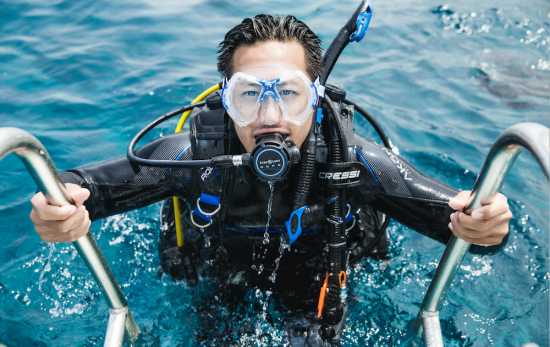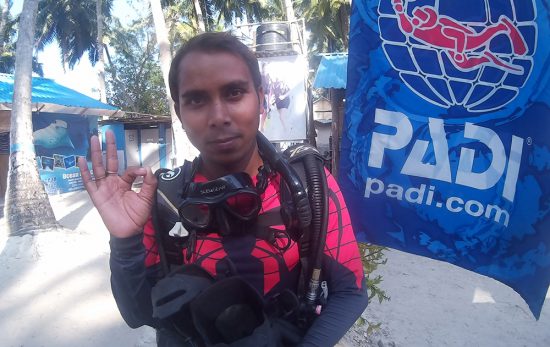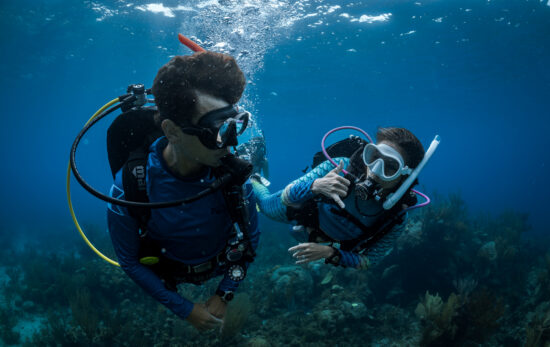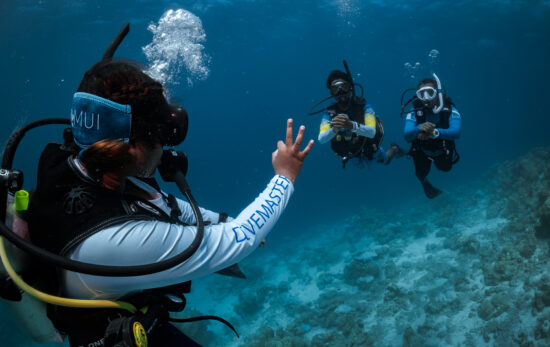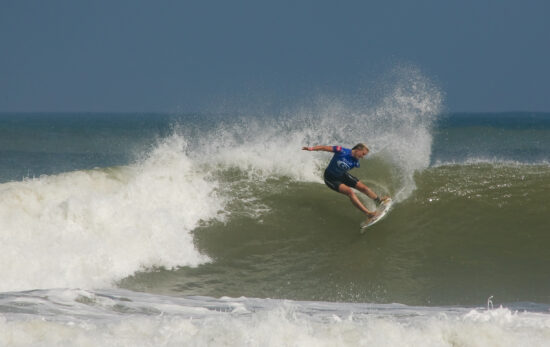Becoming a PADI Master Scuba Diver was something I was always keen to achieve. Not only do fewer than two percent of divers achieve this rating, but it would also coincide perfectly with becoming a PADI Divemaster and enable me to gain more experience in a range of different diving as I worked towards becoming a PADI Professional. Having already completed my Deep Diver specialty course and becoming a Rescue Diver, I decided to choose four other specialties that would be perfect for furthering my diving education journey. It turns out that I chose four of the most popular specialty courses for the PADI Master Scuba Diver rating.
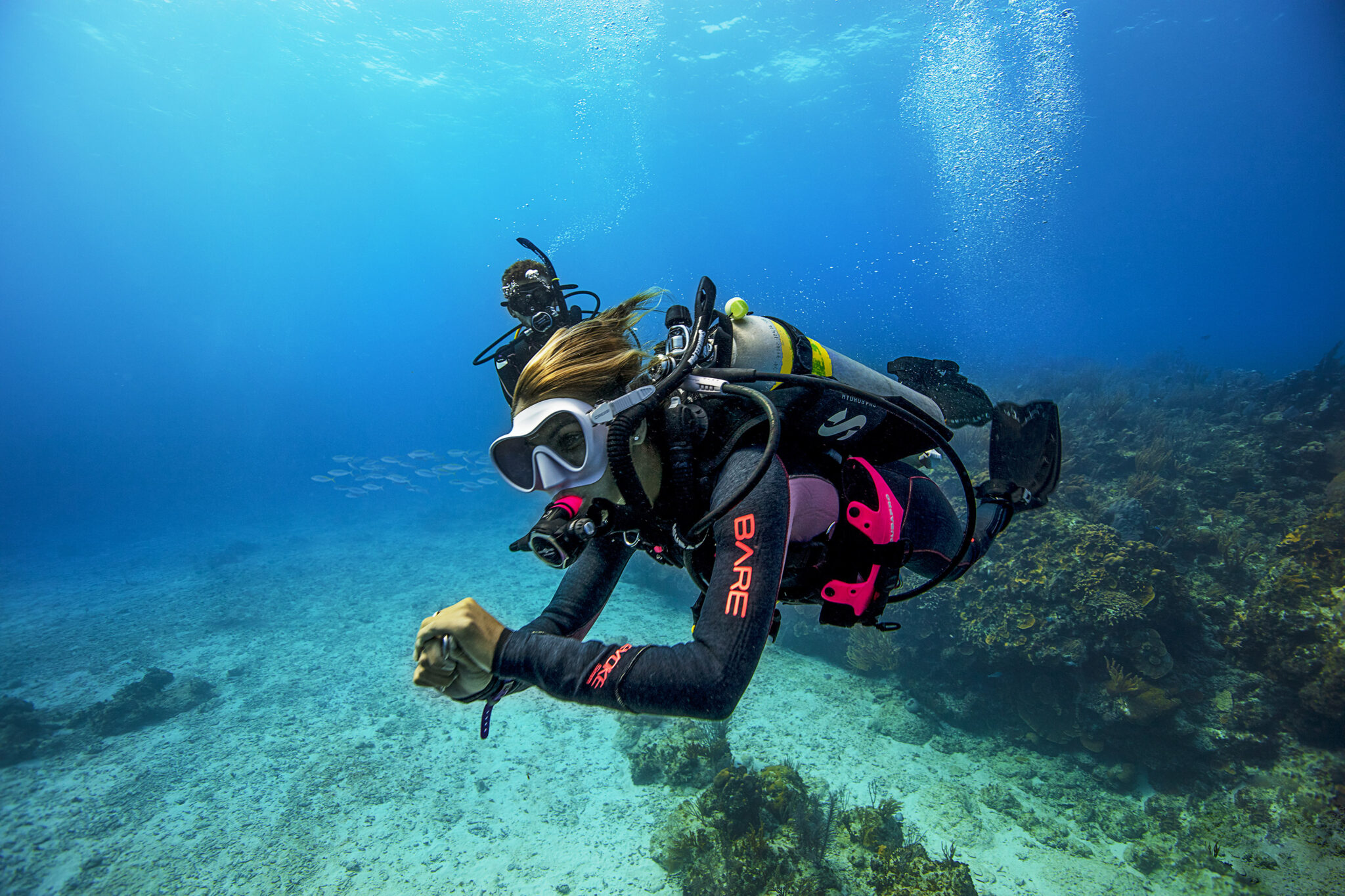
Enriched Air Diver (Nitrox)
This is a one-day course where we learned about the many benefits of breathing enriched air on a dive. Enriched air is a mix of air containing more than 21% oxygen (also known as nitrox). Qualifying as an enriched air diver enables you to benefit from longer ‘no decompression’ times, meaning you can stay at depths for longer or opt for shorter surface intervals. This is great for exploring certain deeper dive sites or if you are doing multiple dives over a few days.
Doing two dives using enriched air is optional as part of the course, but highly recommended.

Underwater Navigator
This course dramatically improves confidence in the water. During the course, you’ll learn to use a combination of compass and natural navigation to find your way around different dive sites. The course takes one to two days, and over three dives, we learned how to master using a compass, estimate distances we were covering underwater, and to mark and relocate a specific position or submerged object from the surface.
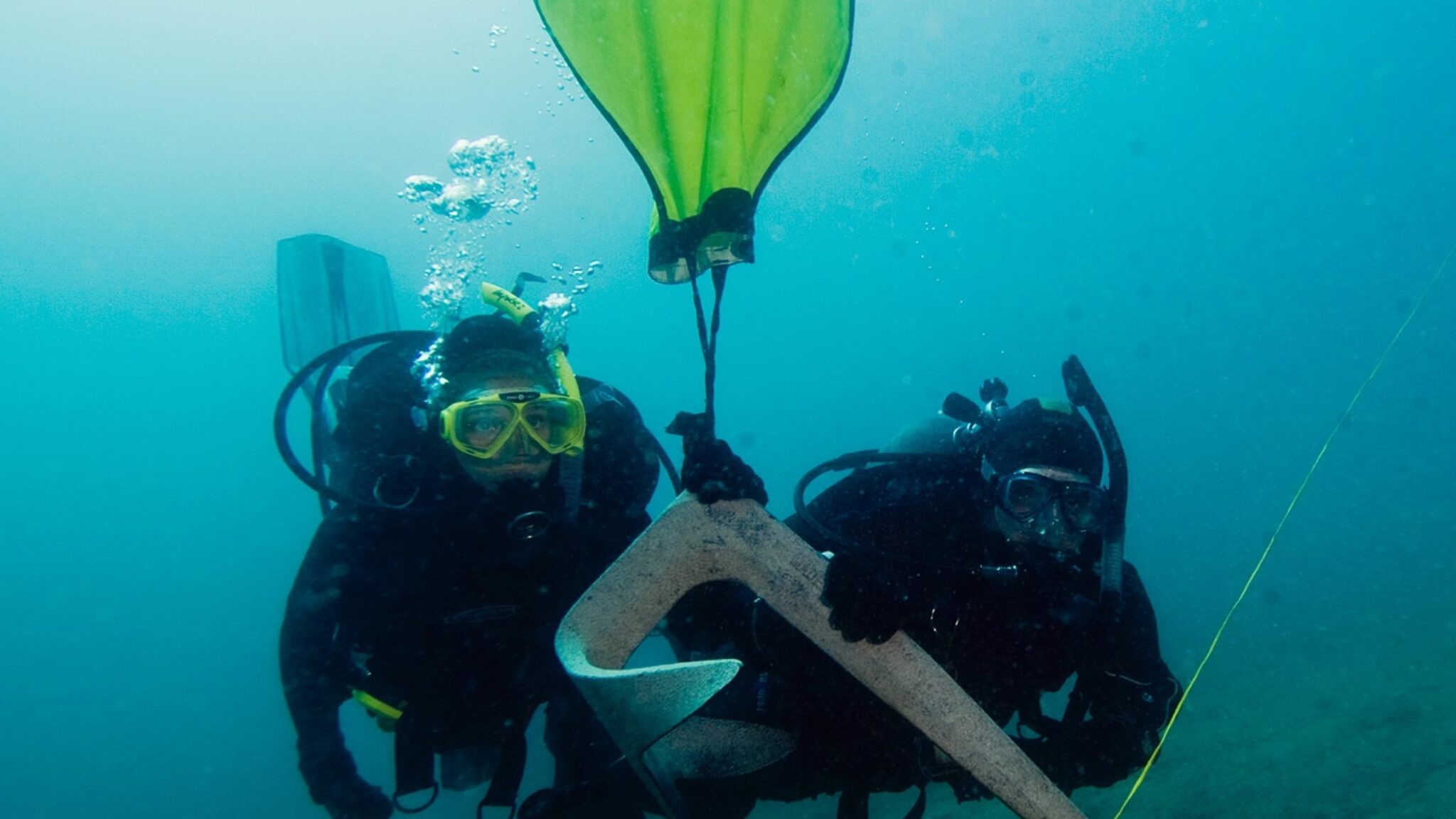
Search and Recovery Diver
This two-day, four-dive course taught us how to locate and retrieve a range of objects using different search patterns, which vary depending on the size of the objects. We learned how to tie different knots underwater and how to use a lifting device (lift bag) to bring heavier objects to the surface. It was certainly very rewarding conducting a search pattern to successfully find the object hidden by our instructor. Using a lift bag, as well as many elements of this and other courses, improved our general dive skills, such as buoyancy control and positioning in the water.
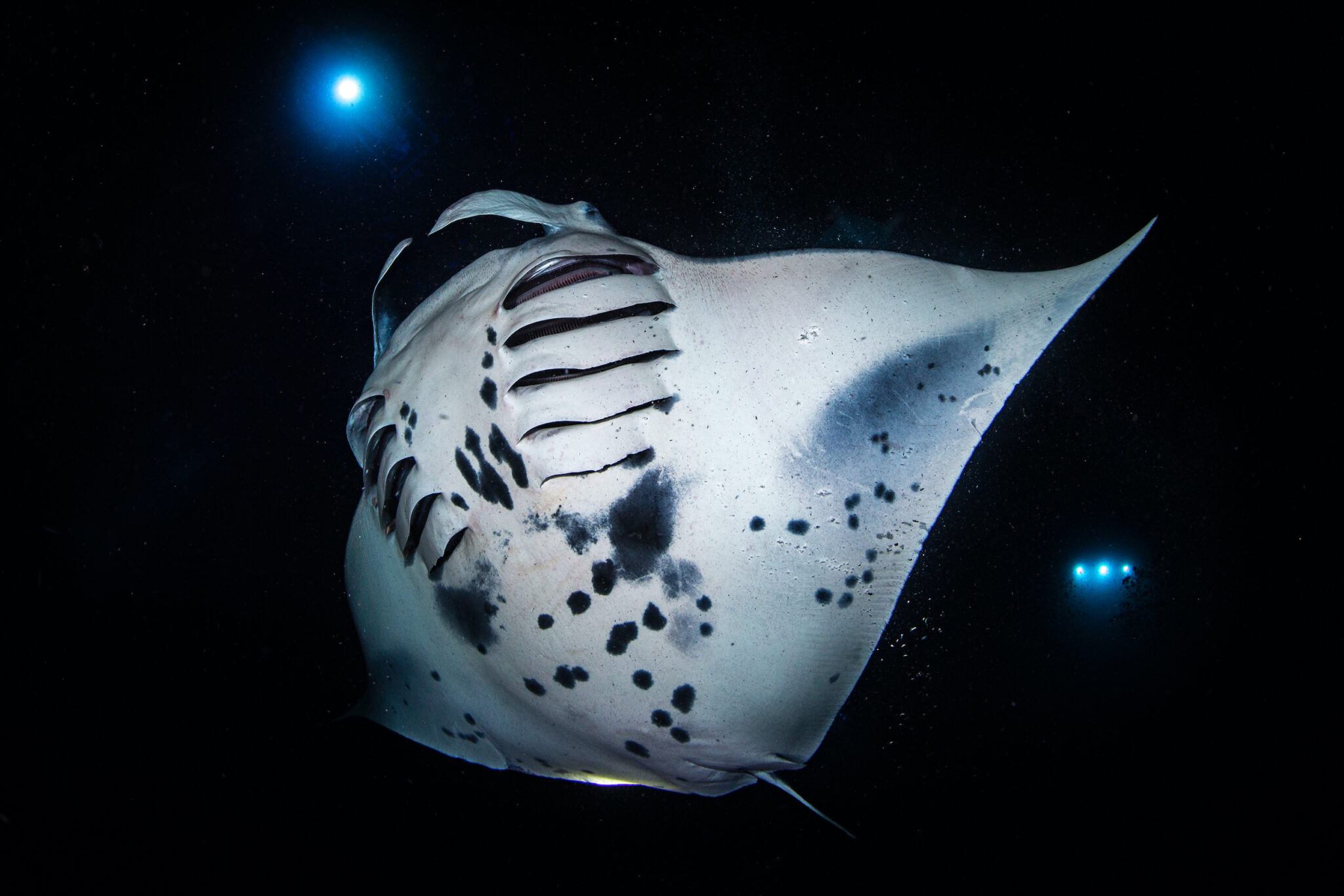
Night Diver
Dive sites are a completely different and exciting experience in the dark. This three-dive course enabled us to enter an even newer underwater world by teaching us how to use our light devices/torches effectively. Communication and navigation also differ in the dark, so this element is also explained and put into practice. You’ll learn all this while observing how marine life changes at night.
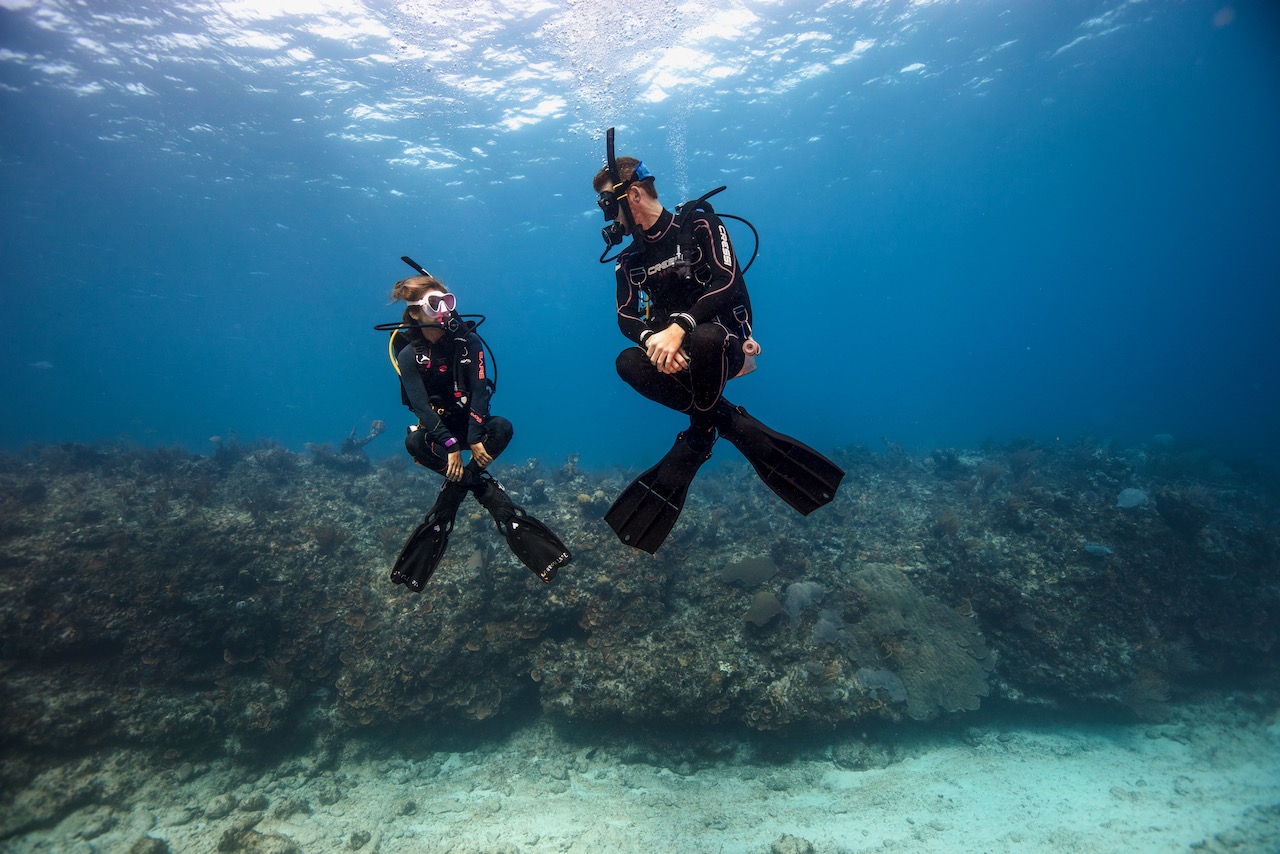
Explore PADI Specialty Courses
The specialty courses above were chosen personally by the author according to their preferences. There are many other options available that allow you to tailor your Master Scuba Diver experience to your favorite types of diving, or areas where you wish to learn something new. Here are a few more options to consider:
- Peak Performance Buoyancy: This is an excellent option for those who find themselves going up and down more than they would prefer. You’ll learn how to fine-tune your buoyancy using your breathing as well as how to adjust your weights for trim and how to move effortlessly through the water – all of which will improve your air consumption!
- Digital Underwater Photographer: If you and your buddies are thinking about becoming PADI Master Scuba Divers, why not take underwater images of your progress? During this specialty you will learn about underwater imaging equipment, how to prepare your camera rig, how to optimize your shots, and how to utilize artificial lighting for the best results. By the end of the course, you’ll be shooting like a pro!
- Dry Suit Diver: If you are considering diving in cooler waters then a dry suit is essential for thermal protection. During the Dry Suit Diver Specialty, you’ll learn how to control the amount of air in your dry suit for buoyancy and to prevent a dry suit squeeze. You’ll learn about different types of dry suits, gauging your weights for dry suit diving as well as additional factors that need to be taken into consideration when diving in a dry suit in cold water.
- Wreck Diver: Wreck diving is an exciting experience, and it’s even more worthwhile when you have developed some additional skills and knowledge. During this specialty, you’ll learn how to identify different parts of a wreck, how to navigate a wreck and penetration techniques for safely entering, exploring and exiting a wreck.
- Drift Diver: During your journey to becoming PADI Master Scuba Divers, it’s likely that you (and your buddies) will encounter ocean currents. In the Drift Diver Specialty, you’ll learn how to make drift diving entries and exits, how to dive safely in currents and how to use them to your advantage – get ready to go with the flow!
This is not a complete list of all PADI Specialty courses that are available. There are still more for you to discover!

What Have I Gained?
Achieving this highest rating in recreational diving is incredibly rewarding and the five specialties combined enabled me to be more knowledgeable and experienced divers. Whether you choose to continue your journey into the world of professional diving or not, I found becoming a PADI Master Scuba Diver is certainly worthwhile.

By guest blogger Lowri James
